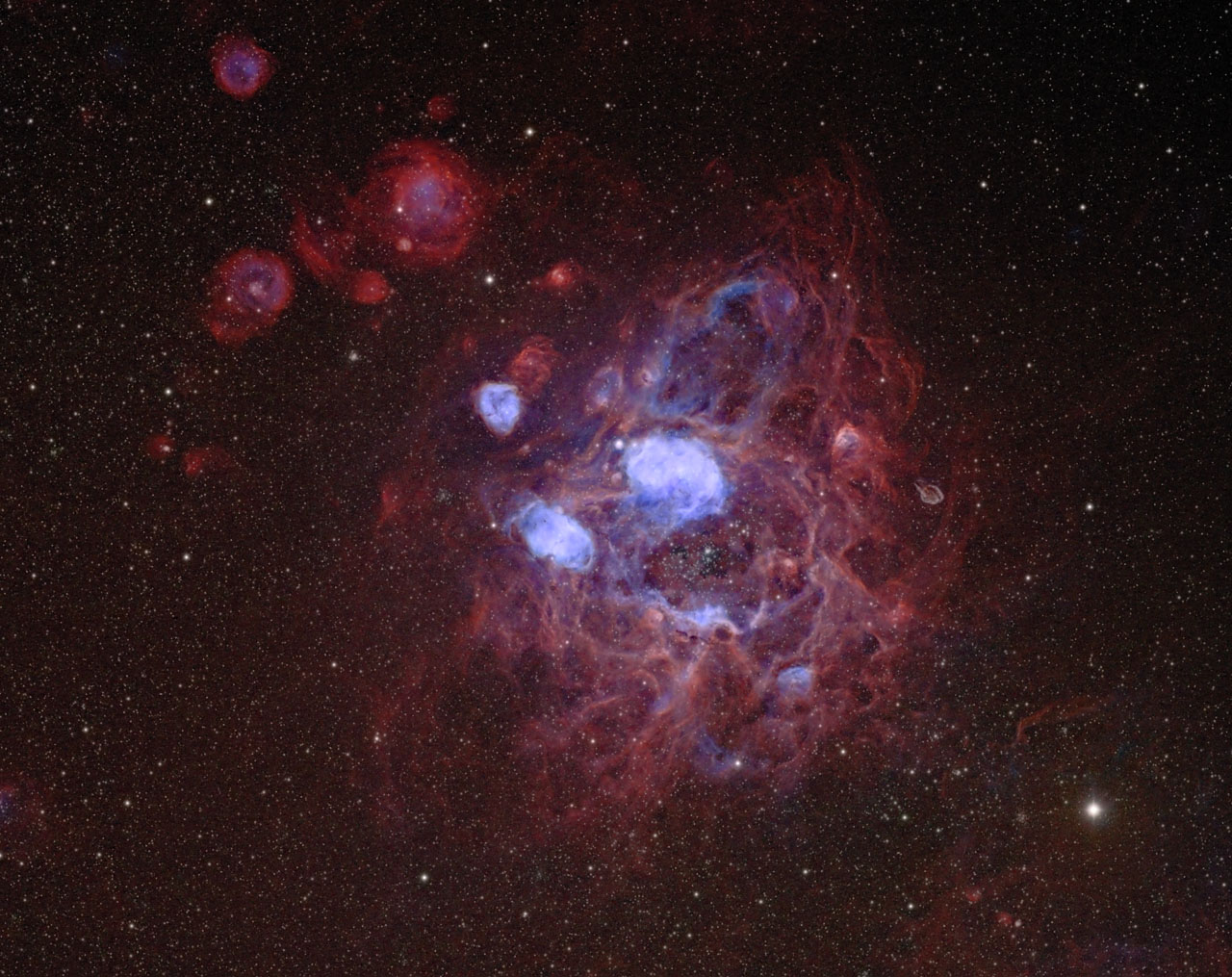This is NGC1763, an emission nebula in the Large Magellanic Cloud (LMC) and constellation Dorado. I’ve been pondering why it might be that many areas of the LMC and SMC look like paint daubs – an appearance that is not common in other nebulae I have photographed. Part of the reason might be the size and distance of the objects. Other than these targets in LMC and SMC, almost every nebula I have photographed is between 1,000 and 10,000 light-years from Earth. The Magellanic Clouds are more like 150,000 light-years away, but I’m using the same magnification (angular image size), so these are really much larger objects. That’s an incomplete explanation at best, but it’s all I have. In fact, I have found very little information about NGC1763 at all, but I do like that there is a nice open cluster of stars at the center of the nebula.
There’s a lot going on in Space these days, including the InSight Mars Lander, which I haven’t had time to research, to say nothing of writing about it. But you can google “InSight Mars Lander” and find a growing number of cool images from the Red Planet. The Geminids Meteor Shower is coming up this Friday (Dec.14th). The Geminids are a very reliable meteor shower, producing a large number of fast, medium bright streaks. But we rarely get to see them here in the Pacific Northwest because it’s usually cloudy this time of year. And this year you’ll have to stay up pretty late to see them anyway because the Moon doesn’t set until almost midnight on Friday. At that time Gemini is to the southeast and about 60 degrees above the horizon. The best time to look for these meteors is around 2AM, when Gemini is due south and at it’s highest (about 70 degrees above the horizon).
A week after that is the Winter Solstice – the longest night of the year.
Lots of things will be happening in the night sky in 2019, and I’ll be writing about it here as often as I can. I’m hoping that will be more often than it has been lately!
